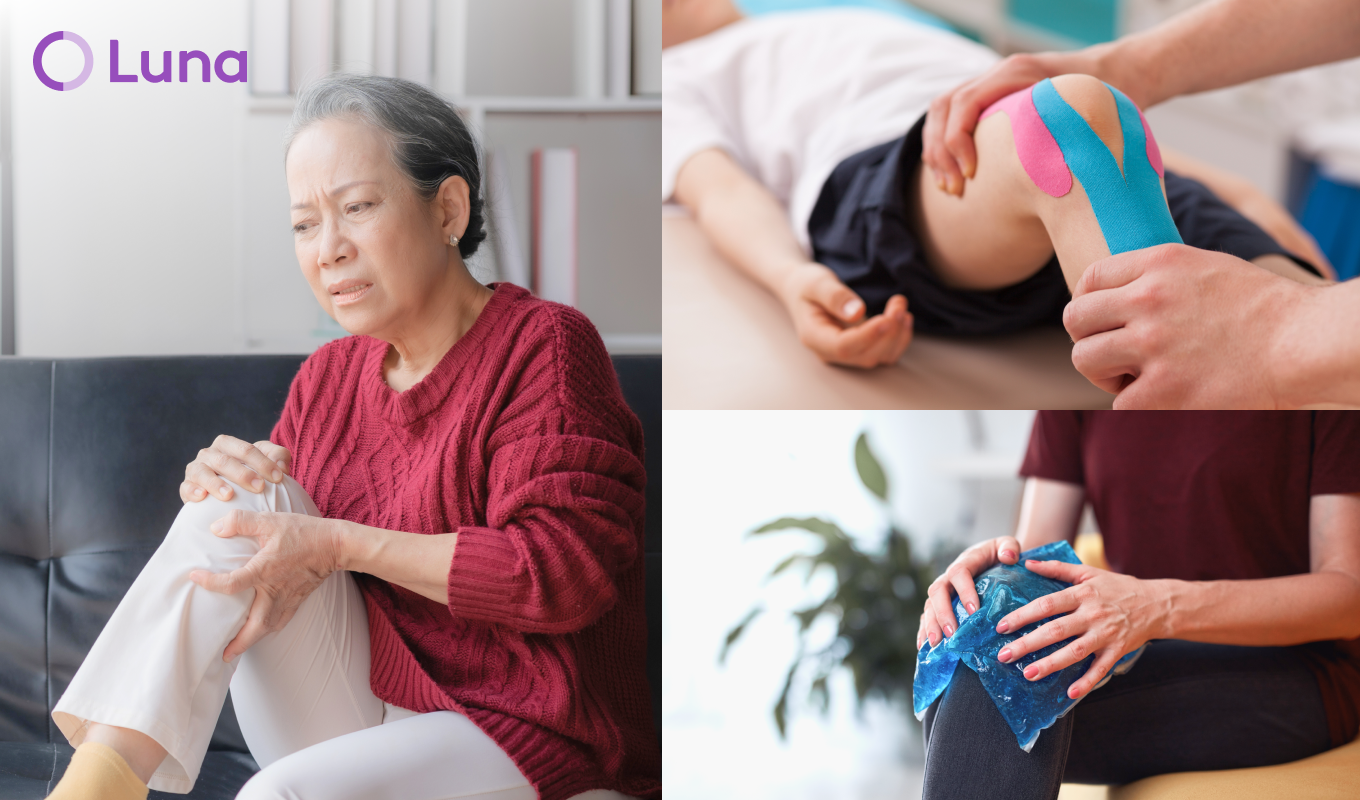Knee buckling is a common ailment among adults. It occurs when one or both knees suddenly "give out." That "buckle" or giving-away is a sign of knee weakness and is the body’s defense mechanism for preventing further injury. Unstable or weak knees are
a tell-tale sign of damage, especially if they buckle often and there’s associated pain.
Causes and Symptoms of Knee Buckling
Several things cause knee buckling, including:

If your knee cap constantly dislocates, it’s known as patella instability. The dislocation causes misalignment, resulting in weakness and buckling of the knees.

Inflammation resulting from knee injuries can interfere with the smooth movement of the joint. Plica Syndrome is inflammation of the medial plica (part of the knee’s joint lining and synovial tissue). The swelling causes the knee to pop, crack, and buckle.

The knee has four primary stabilizing ligaments: the ACL (Anterior Cruciate Ligament), PCL (posterior cruciate ligament), MCL (medial collateral ligament), and the LCL (lateral collateral ligament). Tearing of any of these ligaments is painful and
results in knee instability.

When fragments get trapped between the knee joints, movement of the knee is challenging. You may hear a grinding sound when flexing the knee joint.

While worn cartilage and injuries often lead to arthritis, knee buckling is a common symptom of both osteoarthritis and rheumatoid arthritis. Both are autoimmune diseases.

MS is another autoimmune disease. Because it attacks the central nervous system, it causes balance and sensory problems, resulting in knee weakness and instability.

A torn meniscus is a common knee injury. When this ligament is lacerated, the knee becomes unstable and is prone to buckling. A torn meniscus causes knee pain that typically gets worse over time.

Knee pain, tingling, and numbness could be signs of nerve problems. Nerve damage causes numbness, weakness, or paralysis in the knees, making them prone to buckling.
How Do You Strengthen a Weak Knee?
There are many exercises and techniques that can build strength in the knee and the surrounding muscles that support it. If you’re experiencing symptoms of weak knees, it’s essential to get the right kind of help to identify the cause of the issue and
ensure it doesn’t get worse. For example, many times, a weak hip can cause stress in the knee.
Physical therapy is a great way to stabilize your knee, rectify muscular imbalances, improve range of motion, and reduce your pain. Rather than DIYing your recovery, enlist the help of a physical therapist to evaluate the issue and develop a customized treatment program based on your specific needs. A combination of stretching, strengthening, and balancing exercises is the best approach for improving knee weakness.
Why Do My Knees Feel Weak All of the Sudden?
The knee is the largest joint in the body and bears a lot of your body weight. This naturally causes wear and tear overtime. If you’re experiencing sudden weakness in your knee joints, it’s most likely a stability issue that’s been developing for a while.
If you’re experiencing severe pain, swelling, or bruising, seek immediate medical care. It’s possible that one or more of the four ligaments in your knee are torn. Chronic knee buckling can also be a sign of nerve damage, meniscus tears, arthritis,
or plica syndrome. The first step here would be to see your doctor, who will examine your knee for serious injury, make a diagnosis, and prescribe treatment, which may include rest and physical therapy.
When Should I Wear a Brace for Weak Knees?
This depends on your specific situation. A brace should only be used as an interim solution during the initial phase of recovery from an injury or surgery. Wearing a brace for weak knees will not address the underlying cause—it will simply mask the issue
temporarily. And sometimes, a knee brace can actually do more harm than good. If worn improperly or at the wrong time, you could cause further damage to the knee. Before opting to wear a knee brace, seek advice from a doctor or physical therapist
who can guide you towards the best course of action.
What Activities are Easy on the Knees?
When you’re suffering from weak knees, low-impact exercises that don’t put a lot of stress on the joints are best. When you start a new activity, try adding it into your week in small increments every other day and build up slowly. Cycling, water aerobics,
walking, tai chi, swimming, yoga, canoeing, or kayaking are all possible options for those looking to take it easy on their knees. Strength training is an important aspect of knee pain recovery, but it’s important to get guidance from a licensed professional before attempting.
Resting the knee and utilizing either a cold or hot compresses are excellent treatments. Consider wearing a knee brace to provide more stability and help prevent future episodes of knee buckling. However, if your knee continues to give out or you're experiencing
chronic knee pain,
get an exam to determine the cause. If severe damage is found, it may require surgery. Minor knee injuries and damage, however, are often treatable with physical therapy.
Knee Buckling and Physical Therapy
When there is only nominal damage to the knee, physical therapy can effectively treat it quickly. PT helps to strengthen weak muscles and heal the damaged tissue that surrounds the knee. Also, it improves stabilization as well as accelerates the overall
healing process.
On-demand physical therapy is
an excellent way to avoid putting more strain on your knee while getting the help you need. You get one-on-one time with a board-certified PT who comes to your home and prescribes an exercise plan tailored to your unique needs and environment. It’s
convenient, effective, and designed to help you feel better faster.
Stop worrying about your knees buckling and start healing instead. Contact Luna on-demand physical therapy for the help you need today.
Handpicked Resources for You
- What causes knee buckling?, Medical News Today
- Don’t Ignore Buckling Knees, Berkeley Wellness (University of California, Berkeley, School
of Public Health)
- Knee Pain - Symptoms and Causes, Mayo Clinic
- Does Your Knee Buckle or Give Way? Top 3 Exercises-Unstable Knee, (Video), Bob and Brad, "The Two Most Famous Physical Therapists on the Internet"
- When Your Knee Gives Out, Verywell Health
- Knee Injuries Affect Athletes…and Everyone Else Too,
UPMC Pinnacle (University of Pittsburgh Medical Center)








